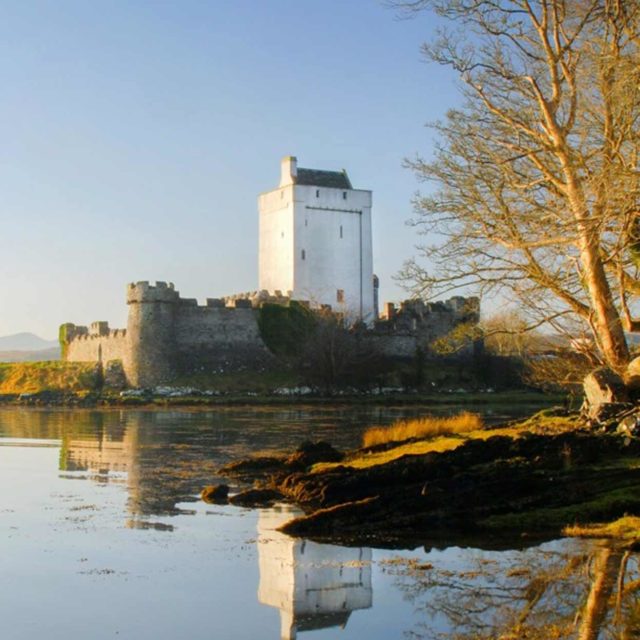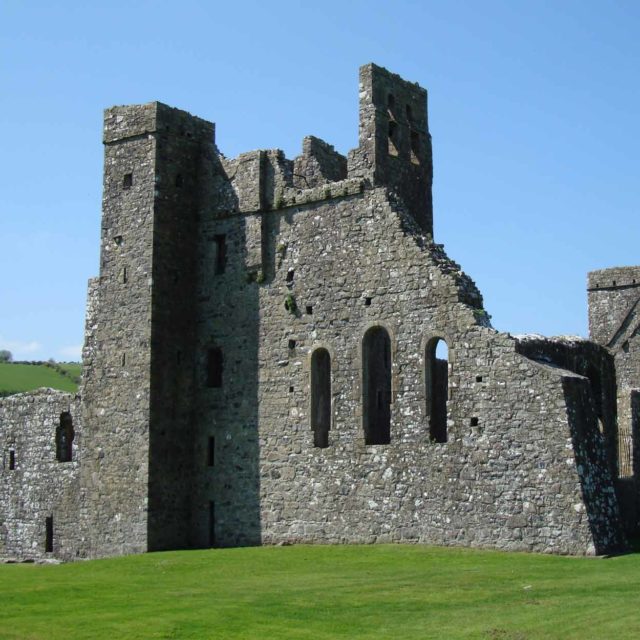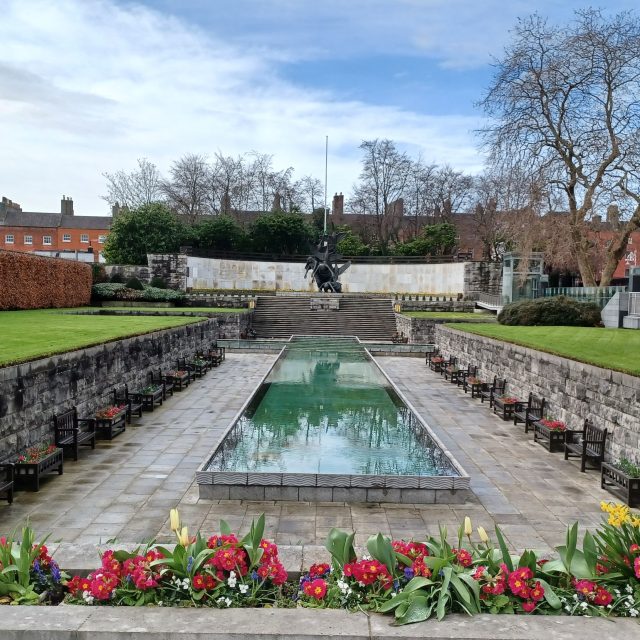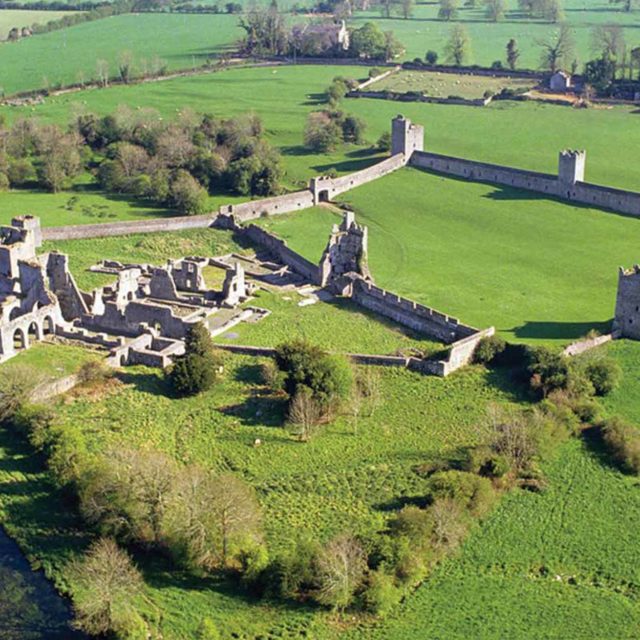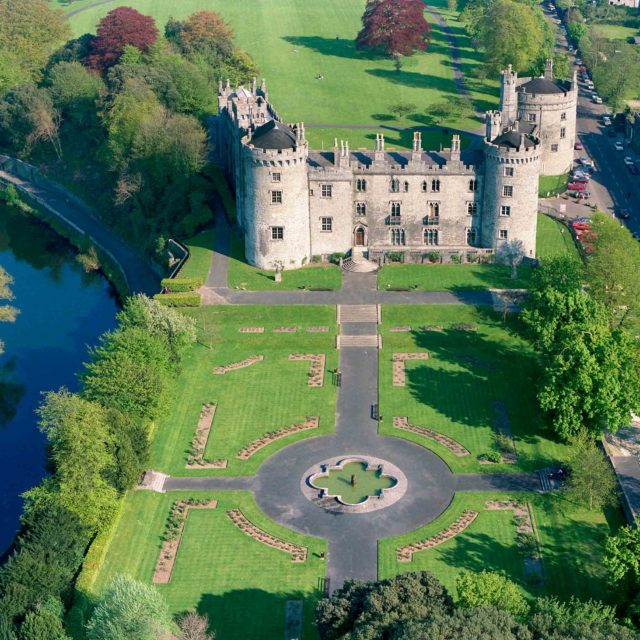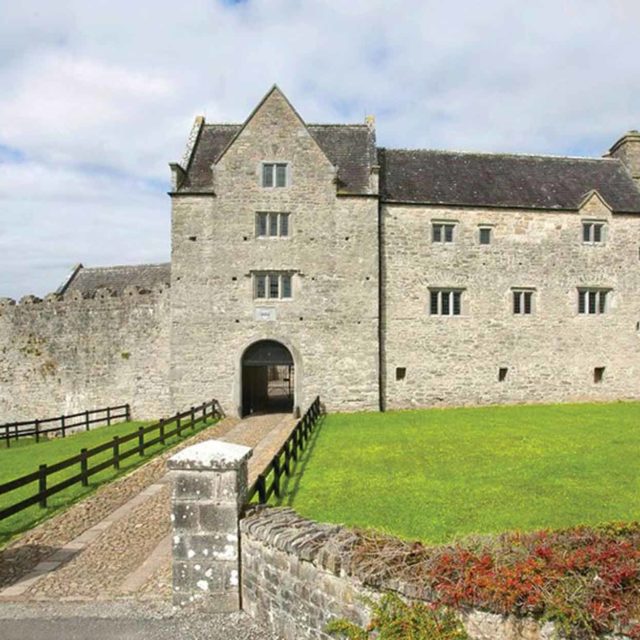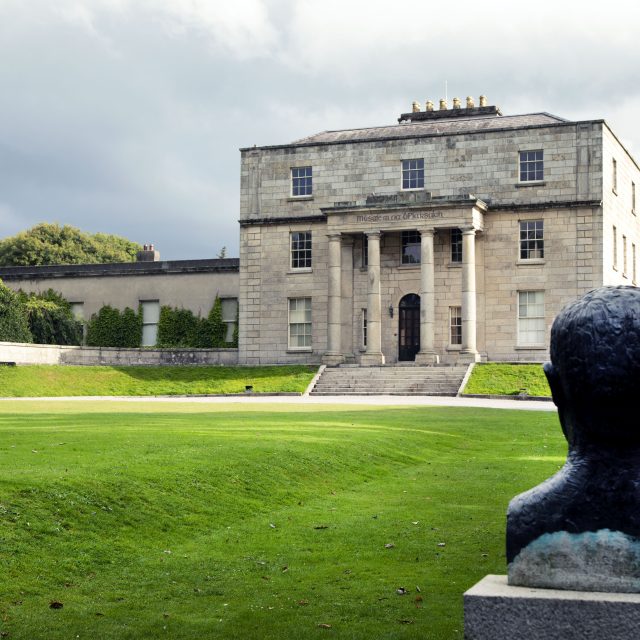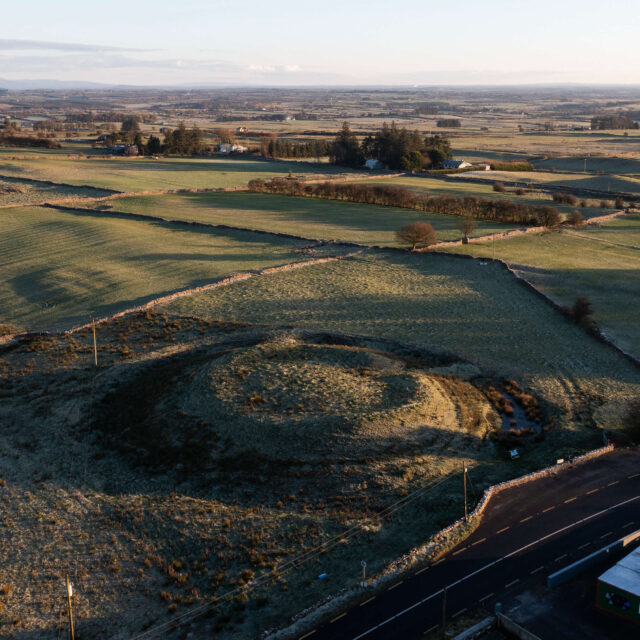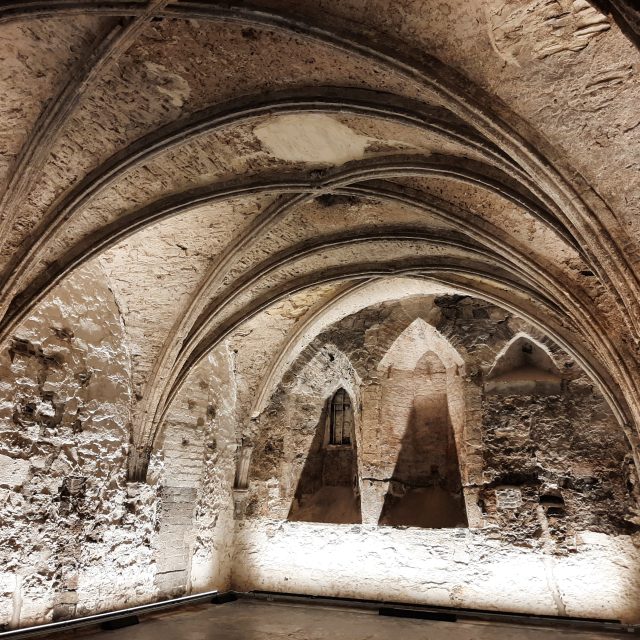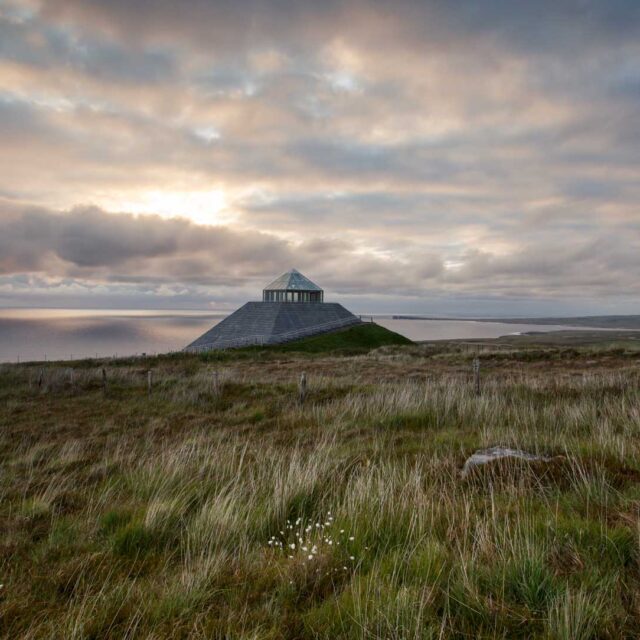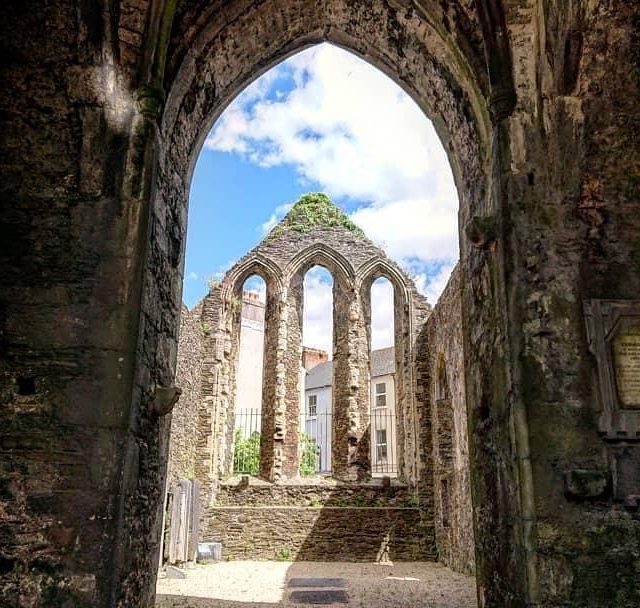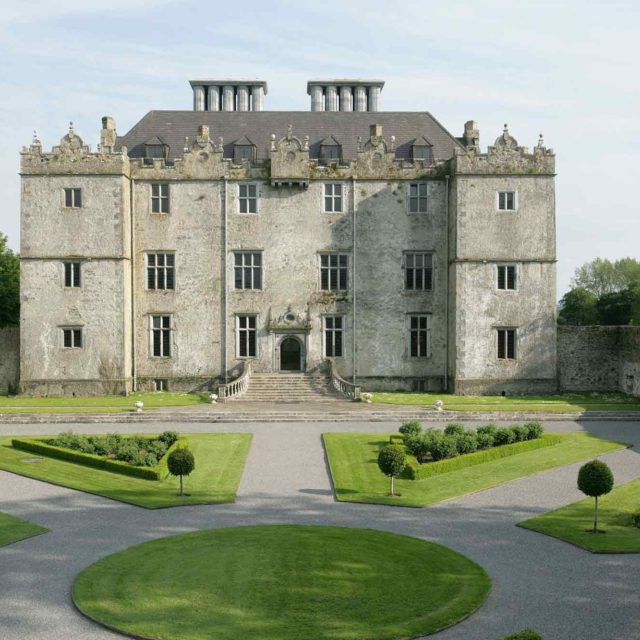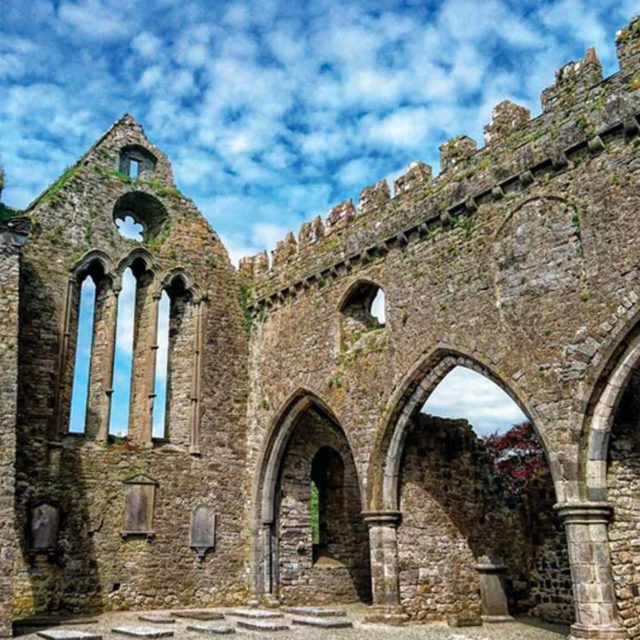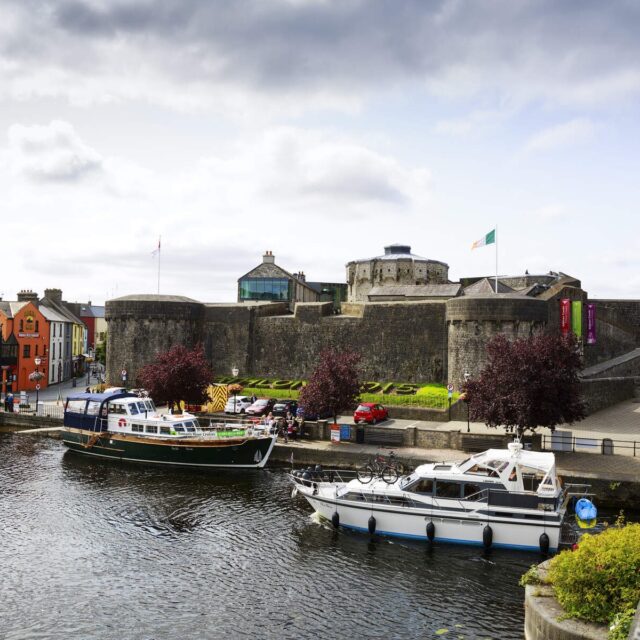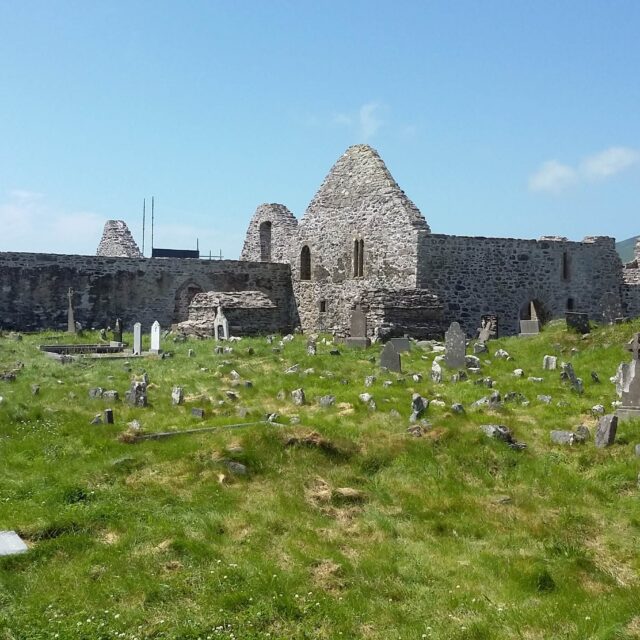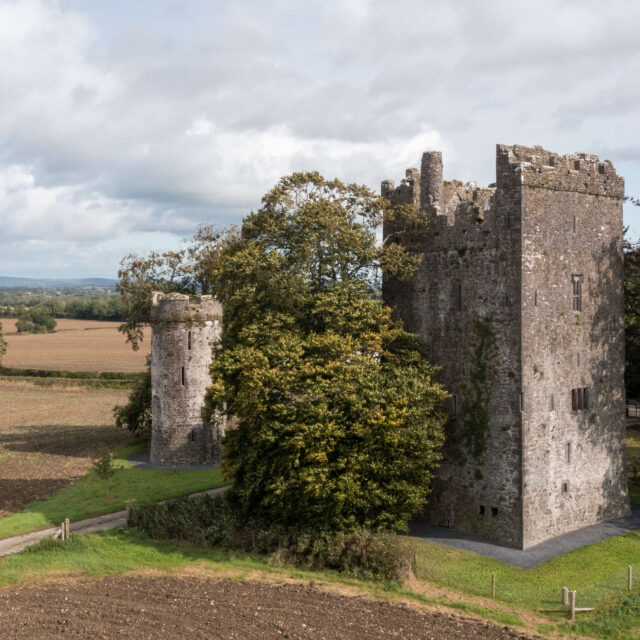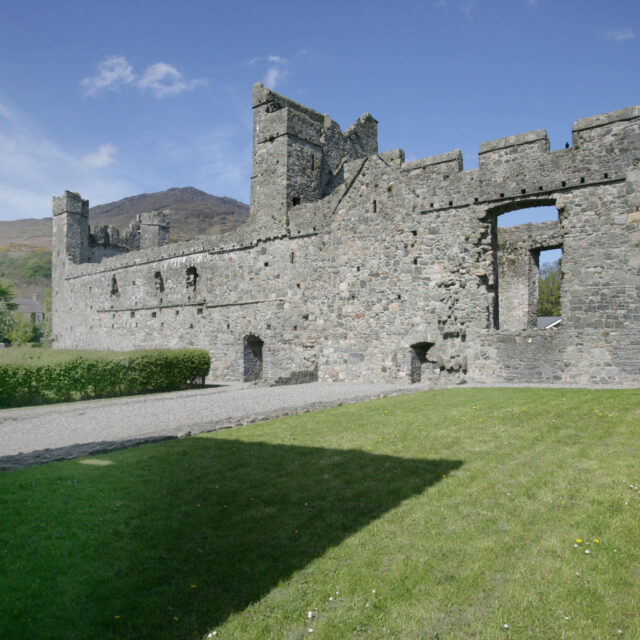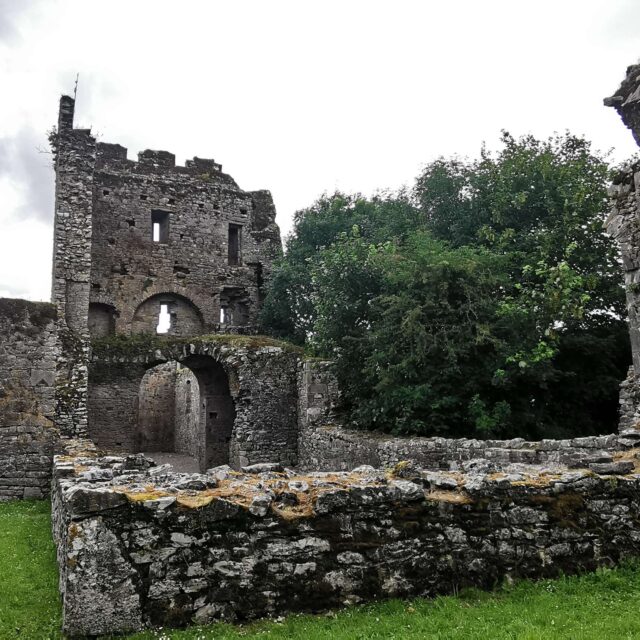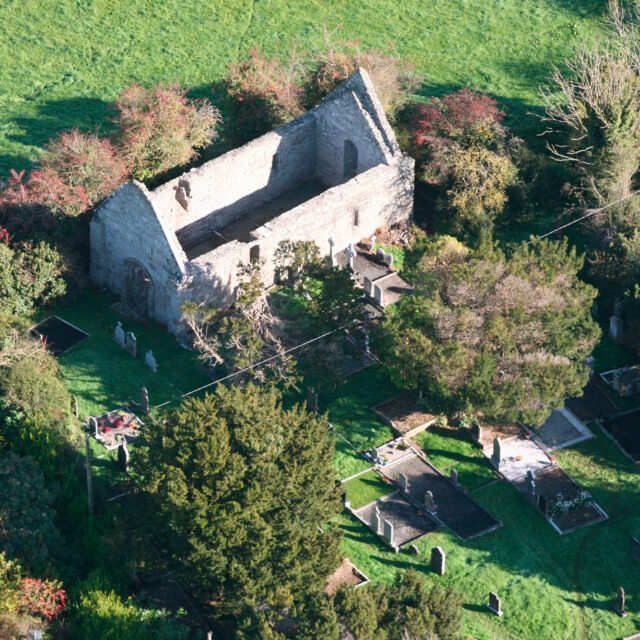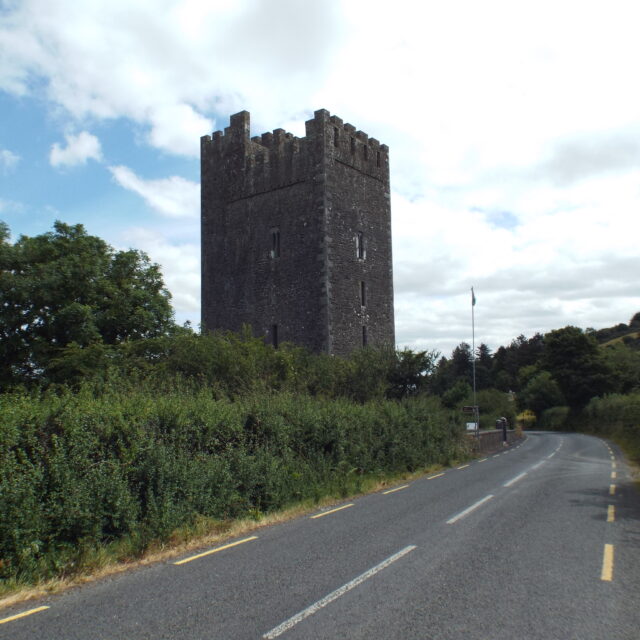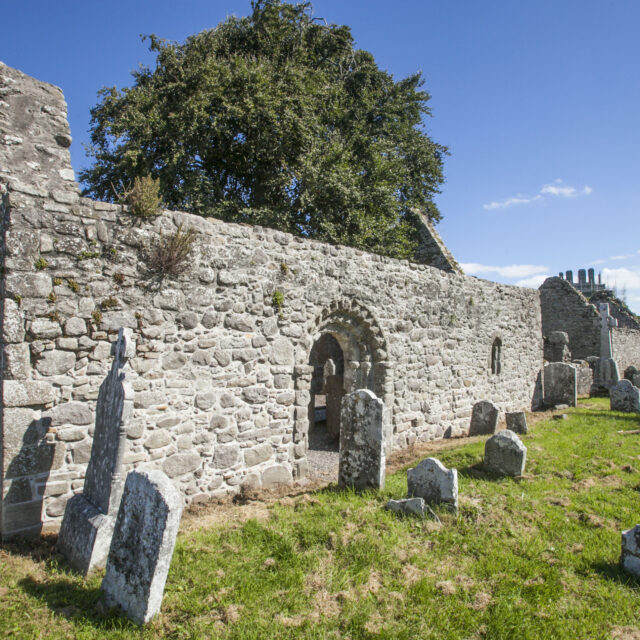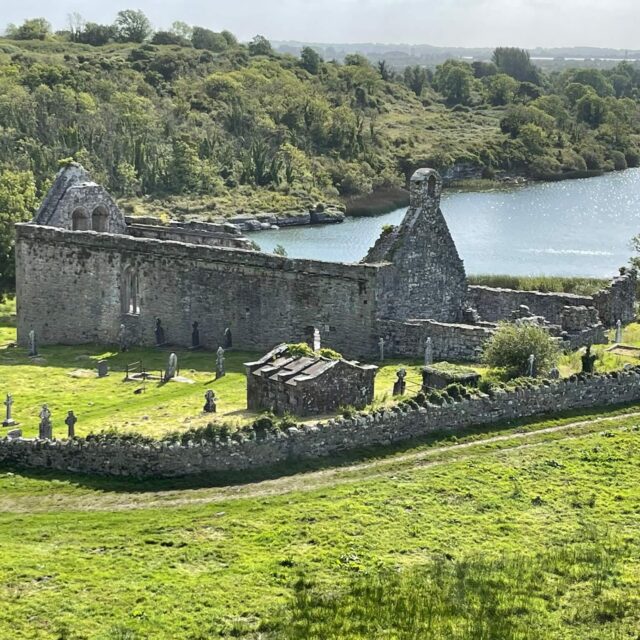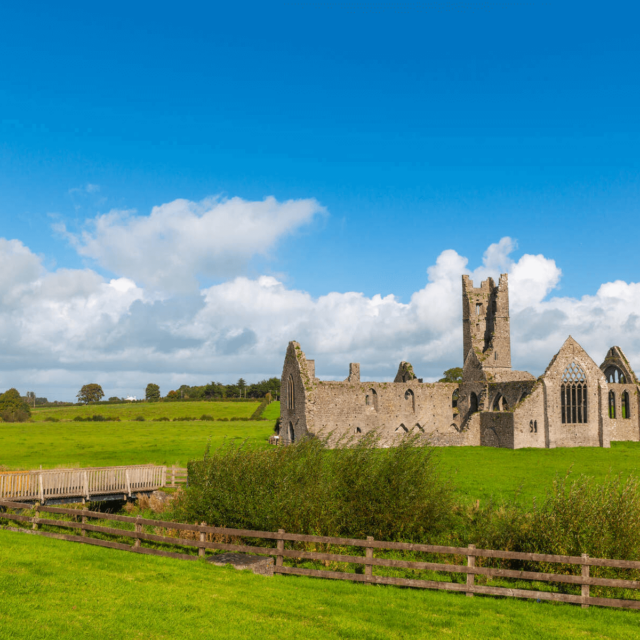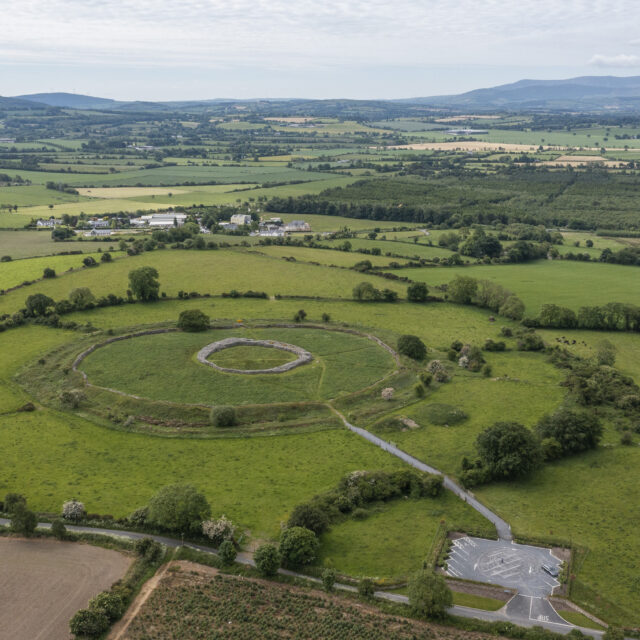173 suíomhanna
![Caisleán Bhaile Átha Cliath]()
Caisleán Bhaile Átha Cliath
Croílár chumhacht stairiúil na hÉireann
![Gairdíní Altamont]()
Gairdíní Altamont
Gairdíní den tseandéanamh a bhfuil atmaisféar dá gcuid féin acu
![Áras an Uachtaráin]()
Áras an Uachtaráin
Blaiseadh de ghalántacht uachtaránachta
![Reilig Mhíleata Chnoc an Arbhair]()
Reilig Mhíleata Chnoc an Arbhair
Áit adhlactha cheannairí 1916
![Ionad Cuairteoirí Chath na Bóinne – Eastát an tSeandroichid]()
Ionad Cuairteoirí Chath na Bóinne – Eastát an tSeandroichid
Áit ar throid beirt ríthe ar mhaithe le todhchaí na hEorpa
![Ionad Cuairteoirí Bhrú na Bóinne: Sí an Bhrú, Cnóbha agus Dubhadh]()
Ionad Cuairteoirí Bhrú na Bóinne: Sí an Bhrú, Cnóbha agus Dubhadh
Tabhair cuairt ar an tírdhreach seandálaíochta is saibhre in Éirinn
![Caisleán na Cathrach]()
Caisleán na Cathrach
Daingean cosanta ón tríú haois déag
![Caisleán Chairlinn]()
Caisleán Chairlinn
A Norman citadel in the shadow of a giant
![Reilig Mheigiliteach na Ceathrú Móire]()
Reilig Mheigiliteach na Ceathrú Móire
Na tuamaí meigiliteacha is sine in Éirinn suite i dtírdhreach drámatúil neoiliteach
![Teach agus Fearann Páirce Bhaile an Chaisleáin]()
Teach agus Fearann Páirce Bhaile an Chaisleáin
An chéad teach mór Pallaidiach in Éirinn agus an ceann is breátha
![Daingean Míleata Rinn Chorráin]()
Daingean Míleata Rinn Chorráin
Daingean míleata réaltchruthach a sheas an fód ar feadh na gcéadta bliain
![Láithreán Mainistreach Chluain Mhic Nóis]()
Láithreán Mainistreach Chluain Mhic Nóis
Mainistir shuntasach ar bhruach abhainn na Sionainne
![Ionad Cuairteoirí Theach an Chustaim]()
Ionad Cuairteoirí Theach an Chustaim
An tseoid ailtireachta is cáiliúla in Éirinn
![Caisleán na dTuath]()
Caisleán na dTuath
Dúnfort cois uisce a bhfuil stair an-chorraitheach ag baint leis
![Caisleán Dhún na nGall]()
Caisleán Dhún na nGall
Ceann de na caisleáin Ghaelacha is áille in Éirinn
![Cúirt agus Eastát Dhún ar Aill]()
Cúirt agus Eastát Dhún ar Aill
Leagan fíorshaoil de Downton Abbey i dTuaisceart Chorcaí
![Dún Aonghasa - Seandún Cloiche]()
Dún Aonghasa - Seandún Cloiche
Ceann de na dúnta is suntasaí in iarthar na hEorpa
![Dearc Fhearna]()
Dearc Fhearna
Áit spéisiúil uathúil ina dtagann an stair agus an gheolaíocht le chéile
![Teachin Uí Dhuibhir – Mhic Alastair]()
Teachin Uí Dhuibhir – Mhic Alastair
Suíomh neamhghnách catha in Éirí Amach 1798
![Cúirt agus Eastát Ioma]()
Cúirt agus Eastát Ioma
Sárshampla den ailtireacht nuachlasaiceach
![Teach Cogaidh an Ghorta Mhóir 1848]()
Teach Cogaidh an Ghorta Mhóir 1848
Suíomh neamhghnách inar tharla eachtra fhuilteach
![Teach agus Gairdíní Farmleigh]()
Teach agus Gairdíní Farmleigh
Teach mór eicléictiúil Éadbhardach agus teach aíochta stát na hÉireann
![Caisleán Fhearna]()
Caisleán Fhearna
I gcliabhán thiarnas na nAngla-Normannach
![Mainistir Bhaile Fhobhair]()
Mainistir Bhaile Fhobhair
Aimsigh oidhreacht rúndiamhair Naomh Feichín
![Crannlann agus Gairdíní Fhóite]()
Crannlann agus Gairdíní Fhóite
Téigh ag fámaireacht thart ar ósais oileánda de fhlóra neamhchoitianta andúchasacha
![An Gairdín Cuimhneacháin]()
An Gairdín Cuimhneacháin
Cuimhneachán suaimhneach i gcroílár chathair Bhaile Átha Cliath
![Teach agus Gailearaí Gléibe – Teach Derek Hill]()
Teach agus Gailearaí Gléibe – Teach Derek Hill
Fiosraigh bailiúchán ealaíne den chéad scoth
![Láthair Mhainistreach agus Ionad Cuairteoirí Ghleann Dá Loch]()
Láthair Mhainistreach agus Ionad Cuairteoirí Ghleann Dá Loch
Gleann tearmainn do naoimh agus do scoláirí
![Tithe an Rialtais]()
Tithe an Rialtais
Mol oibre do ghnó an stáit
![Reilig Mhíleata Ghráinseach Ghormáin]()
Reilig Mhíleata Ghráinseach Ghormáin
Ag cuimhneamh ar shaighdiúirí Impireacht na Breataine a maraíodh
![Gairdíní Heywood]()
Rochtain laghdaithe
Gairdíní Heywood
Tírdhreach suaimhneach agus rómánsúil ar thaobh cnoic
![Teamhair]()
Teamhair
Faigh blaiseadh d’oidhreacht na n-ardríthe
![Ionad Cultúrtha an Phiarsaigh Conamara - Teach an Phiarsaigh agus Ionad Cuairteoirí]()
Ionad Cultúrtha an Phiarsaigh Conamara - Teach an Phiarsaigh agus Ionad Cuairteoirí
Teachín ar maos sa stair réabhlóideach agus i gcultúr na nGael
![Gairdíní Náisiúnta Cuimhneacháin Cogaidh na hÉireann]()
Gairdíní Náisiúnta Cuimhneacháin Cogaidh na hÉireann
Lig scíth agus déan machnamh sa séadchomhartha gairdín álainn seo
![Gairdíní Uíbh Eachach]()
Gairdíní Uíbh Eachach
Mothú an iontais i ngairdín rúnda Bhaile Átha Cliath
![Prióireacht Cheanannais]()
Prióireacht Cheanannais
Tabhair cuairt ar an suíomh eaglasta iata is mó in Éirinn
![Caisleán Chill Chainnigh]()
Caisleán Chill Chainnigh
An tseoid is luachmhaire i gcathair dhraíochtúil mheánaoiseach
![Músaem Phríosún Chill Mhaighneann]()
Músaem Phríosún Chill Mhaighneann
Séadchomhartha do bhreis agus céad bliain de náisiúnachas na hÉireann
![Ionad Cuairteoirí agus Páirc- Cois Locha Loch Goir]()
Ionad Cuairteoirí agus Páirc- Cois Locha Loch Goir
9,000 bliain den saol
![Gairdín Náisiúnta Lus na hÉireann - Glas Naíon]()
Gairdín Náisiúnta Lus na hÉireann - Glas Naíon
Tearmann glas san ardchathair
![Garraithe Náisiúnta na Lus Cill Mhochura]()
Garraithe Náisiúnta na Lus Cill Mhochura
Tearmann ina bhfuil togha agus rogha na gairneoireachta
![Caisleán Urmhumhan]()
Caisleán Urmhumhan
Aimsigh seoid Thúdarach
![Caisleán Parke]()
Caisleán Parke
Lean lorg na bplandálaithe agus na nGael
![Músaem na bPiarsach agus Páirc Naomh Éanna]()
Músaem na bPiarsach agus Páirc Naomh Éanna
Caibidil fhíorshuimiúil i scéal 1916
![Páirc an Fhionnuisce - Gairdíní Bláthanna an Phobail]()
Páirc an Fhionnuisce - Gairdíní Bláthanna an Phobail
Bain sult as bhláthshaothrú Victeoiriach den scoth
![Páirc an Fhionnuisce agus Lárionad Bithéagsúlachta]()
Páirc an Fhionnuisce agus Lárionad Bithéagsúlachta
An áit a nglactar anáil i mBaile Átha Cliath
![Ionad Cuairteoirí Pháirc an Fhionnuisce agus Caisleán Bhaile an Ásaigh]()
Ionad Cuairteoirí Pháirc an Fhionnuisce agus Caisleán Bhaile an Ásaigh
Seoid mheánaoiseach athaimsithe agus a diméin
![Ionad Cuairteoirí Ráth Cruachan]()
Ionad Cuairteoirí Ráth Cruachan
Lean lorg na Banríona Medb ag príomhchathair ársa Chonnacht
![Caisleán Ráth Fearnáin]()
Caisleán Ráth Fearnáin
Caisleán Eilíseach ionspioráideach gar do Bhaile Átha Cliath
![Túr Reginald]()
Túr Reginald
Téigh isteach san fhoirgneamh pobail is sine in Éirinn
![Ospidéal Ríoga Cill Mhaighneann]()
Ospidéal Ríoga Cill Mhaighneann
Ceann de na foirgnimh is íocónach i mBaile Átha Cliath agus an sampla is fearr in Éirinn d’ailtireacht bhreá an 17ú haois
![Teach Sheáin Mhic Dhiarmada]()
Rochtain laghdaithe
Teach Sheáin Mhic Dhiarmada
Ceann de chliabháin an Éirí Amach
![Mainistir Shligigh]()
Mainistir Shligigh
Áit a mbaintear macalla as paidreacha na mbráithre i measc na bhfothrach
![Eaglais agus Ionad Cuairteoirí San Audeon]()
Eaglais agus Ionad Cuairteoirí San Audeon
Séipéal meánaoiseach i gcroílár shaol na cathrach
![Faiche Stiabhna]()
Faiche Stiabhna
Seoid chathartha ó ré Victoria sa chearnóg gairdín is mó i mBaile Átha Claith
![St. Mary's Abbey - Chapter House - Cistercian Monastery]()
St. Mary's Abbey - Chapter House - Cistercian Monastery
The ruins of one of the largest and most important monasteries in medieval Ireland
![Crannlann agus Páirc Chuimhneacháin JFK]()
Crannlann agus Páirc Chuimhneacháin JFK
Crannlann atá ar mhéid uachtaránachta.
![Caisleán Bhaile Átha Troim]()
Caisleán Bhaile Átha Troim
An siombal is mó le rá de chaithréim na Normannach
![Caisleán Áth Dara]()
Ionad dúnta
Caisleán Áth Dara
Sárshaothar meánaoiseach, a tógadh mar chosaint
![Gairdíní Garrán Anna]()
Ionad dúnta
Gairdíní Garrán Anna
Parthas Gairneoireachta i dtuaisceart Chorcaí
![Ardeaglais Ard Fhearta]()
Ionad dúnta
Ardeaglais Ard Fhearta
Trí shéipéal mheánaoiseacha tiomanta do Naomh Breandán
![Caisleán Eas Géitine]()
Ionad dúnta
Caisleán Eas Géitine
Fothrach a bhíodh ina dhaingean ag Iarlaí Dheasumhan
![Caisleán Bhaile Átha an Rí]()
Ionad dúnta
Caisleán Bhaile Átha an Rí
Suaitheantas de thiarnas na Normannach
![Caisleán Achadh na nIúr]()
Ionad dúnta
Caisleán Achadh na nIúr
Seoid stairiúil i gcroílár Chonamara
![Caisleán Bhaile Hac]()
Ionad dúnta
Caisleán Bhaile Hac
Faigh blaiseadh de shaol na Meánaoiseanna
![Caisleán Chúirt an Bharraigh]()
Ionad dúnta
Caisleán Chúirt an Bharraigh
Túrtheach breá Éireannach a bhfuil lorg catha air
![Mainistir Na Búille Chistéirseach]()
Ionad dúnta
Mainistir Na Búille Chistéirseach
Téigh siar i stair na mainistreacha in Éirinn
![An Casino, Marino]()
Ionad dúnta
An Casino, Marino
Mion-sárshaothar ailtireachta na hÉireann - lán de sheachmaill radhairc
![Láithreán Neoiliteach agus Ionad Cuairteoirí Achaidh Chéide]()
Ionad dúnta
Láithreán Neoiliteach agus Ionad Cuairteoirí Achaidh Chéide
An séadchomhartha Clochaoise is fairsing ar domhan
![Bóthar Iarannaoise agus Ionad Cuairteoirí na Coirre Léithe]()
Ionad dúnta
Bóthar Iarannaoise agus Ionad Cuairteoirí na Coirre Léithe
Cosán isteach sa stair
![Teach Dhónaill Uí Chonaill – Tigh Mór Dhoire Fhíonáin]()
Ionad dúnta
Teach Dhónaill Uí Chonaill – Tigh Mór Dhoire Fhíonáin
Baile dúchais Dhónaill Uí Chonaill
![Caisleán Iarla Dheasumhan, Cionn tSáile]()
Ionad dúnta
Caisleán Iarla Dheasumhan, Cionn tSáile
Foirgneamh ag croílár stair Chionn tSáile
![Caisleán Dheasumhan – An Caisleán Nua Thiar]()
Ionad dúnta
Caisleán Dheasumhan – An Caisleán Nua Thiar
Áit a ndéanann fuaimeanna ragairne na meánaoise macalla timpeall na mballaí
![Caisleán Dhún Garbhán]()
Ionad dúnta
Caisleán Dhún Garbhán
Turas ar ais chuig tús riail na nAngla-Normannach in Éirinn
![Mainistir na hInse]()
Ionad dúnta
Mainistir na hInse
Féach le haoibhneas ar shnoiteáin fhíoráille na hAthbheochana
![Greyfriars/French Church]()
Ionad dúnta
Greyfriars/French Church
Ruins of a Franciscan Friary in the heart of the Viking Triangle
![Oileán an Chuilinn]()
Ionad dúnta
Oileán an Chuilinn
Gairdín oileánda ina bhfuil áilleacht uathúil
![Ionad an Bhlascaoid]()
Ionad dúnta
Ionad an Bhlascaoid
An scéal a bhaineann le pobal uathúil oileánda
![Mainistir Chistéirseach Sheireapúin]()
Ionad dúnta
Mainistir Chistéirseach Sheireapúin
Ceann de na fothracha Cistéirseacha is breátha in Éirinn
![Caisleán Lios Tuathail]()
Ionad dúnta
Caisleán Lios Tuathail
Urdhún deireanach na Mhuireasach
![Reilig Mheigiliteach Loch Craobh]()
Ionad dúnta
Reilig Mheigiliteach Loch Craobh
Buaicphointe na healaíne agus an dearaidh Neoilitigh
![Caisleán Mhaigh Nuad]()
Ionad dúnta
Caisleán Mhaigh Nuad
Spléachadh ar shaol i ndaingean Normannach
![Muilte Arbhair agus Lín an Mhuilinn Úir]()
Ionad dúnta
Muilte Arbhair agus Lín an Mhuilinn Úir
Déan oidhreacht tionsclaíochta Uladh a chíoradh
![Láithreán Mainistreach Chistéirseach na Seanmhainistreach Móire]()
Ionad dúnta
Láithreán Mainistreach Chistéirseach na Seanmhainistreach Móire
Tabhair cuairt ar an gcéad áit a bhunaigh na Cistéirsigh in Éirinn
![Caisleán agus Gairdíní Phort Omna]()
Ionad dúnta
Caisleán agus Gairdíní Phort Omna
Breáthacht ón seachtú haois déag ar bhruacha Loch Deirgeirt
![Caisleán Ros Comáin - Túr Thiar Theas]()
Ionad dúnta
Caisleán Ros Comáin - Túr Thiar Theas
Caisleán Normannach drámatúil, taibhseach, ón tríú haois déag
![Caisleán agus Gairdíní Ros Cré, agus Teach Damer/ Muilte Dubha]()
Ionad dúnta
Caisleán agus Gairdíní Ros Cré, agus Teach Damer/ Muilte Dubha
Áit a léiríonn cumhacht mheánaoiseach agus galántacht ón ochtú haois déag
![Caisleán an Rois]()
Ionad dúnta
Caisleán an Rois
Daingean cois locha atá ar maos le seanchas
![Inis Cathaigh agus an tIonad Cuairteoirí]()
Ionad dúnta
Inis Cathaigh agus an tIonad Cuairteoirí
Faigh amach faoi Stair, Miotas agus Finscéal Inis Cathaigh
![Maoin Oidhreachta Domhanda EOECNA Sceilg Mhichíl]()
Ionad dúnta
Maoin Oidhreachta Domhanda EOECNA Sceilg Mhichíl
Mainistir Oileánda ina seasamh go hard os cionn na farraige
![Teampall Mhuire, Gabhrán]()
Ionad dúnta
Teampall Mhuire, Gabhrán
Eaglais in bhfuil clocha oghaim, samhlacha de ridirí agus cuimhneacháin nuachlasaiceacha
![Daingean an Phríomhgharda]()
Ionad dúnta
Daingean an Phríomhgharda
Teach cúirte a bhfuil na céadta bliain den stair faoina chuid áirsí
![Carraig Phádraig]()
Ionad dúnta
Carraig Phádraig
Ard-Rí shéadchomharthaí na hÉireann
![An Teachín Eilbhéiseach]()
Ionad dúnta
An Teachín Eilbhéiseach
Fantaisíocht aoibhinn faoi shaol na tuaithe
![Mainistir Chistéirseach Tintern]()
Ionad dúnta
Mainistir Chistéirseach Tintern
Áit a raibh manaigh ag obair go dian agus áit inar cruthaíodh oidhreachtaí
![Mainistir Chistéirseach Mhainistir Chnoc Muaidhe]()
Unguided site
Mainistir Chistéirseach Mhainistir Chnoc Muaidhe
Bunaithe ag duine de Ríthe na hÉireann is mó a raibh eagla roimhe
![Cloigtheach agus Séipéal Achadh Ghobhair]()
Unguided site
Cloigtheach agus Séipéal Achadh Ghobhair
Mainistir atá suite ar shlí oilithreachta thábhachtach
![Aghaviller Round Tower and Church]()
Unguided site
Aghaviller Round Tower and Church
Founded by Saint Brendan of Birr
![Annagh Church]()
Unguided site
Annagh Church
A small medieval church surrounded by both an ancient and modern graveyard
![Mainistir Phroinsiasach Ard Fhearta]()
Unguided site
Mainistir Phroinsiasach Ard Fhearta
Mainistir Phroinsiasach lena ngabhann stair shuimiúil
![Mainistir Phroinsiasach Eas Géitine]()
Unguided site
Mainistir Phroinsiasach Eas Géitine
Mainistir Phroinsiasach atá suite go síochánta ar bhruach na Daoile
![Cros Bhán Áth Carn]()
Unguided site
Cros Bhán Áth Carn
Cros chuimhneacháin arna cur in airde ag bean i gcuimhne ar a fear céile
![Athenry Dominican Priory]()
Unguided site
Athenry Dominican Priory
The Priory church of Saints Peter and Paul
![Athlone Castle]()
Unguided site
Athlone Castle
A stronghold in the heart of Athlone town
![Mainistir Agaistíneach Bhaile an Sceilg]()
Unguided site
Mainistir Agaistíneach Bhaile an Sceilg
Áit urnaí eile do mhanaigh Sceilg Mhichíl
![Béal Ború (Dún Bhriain Bhóramha)]()
Unguided site
Béal Ború (Dún Bhriain Bhóramha)
Suíomh Ardrí míchlúiteach na hÉireann
![Brownshill Portal Dolmen]()
Unguided site
Brownshill Portal Dolmen
A portal to the past awaits you
![Bunratty Castle]()
Unguided site
Bunratty Castle
One of four castles that once existed at Bunratty
![Caisleán agus Túirín an Teampaill Loiscthe]()
Unguided site
Caisleán agus Túirín an Teampaill Loiscthe
Caisleán a ainmníodh i ndiaidh an scriosta a rinneadh air
![Lios Cahervagliar]()
Unguided site
Lios Cahervagliar
Daingean na Ríthe
![Cahir Castle Cottage]()
Unguided site
Cahir Castle Cottage
A historic cottage set within the grounds of the magnificent Cahir Castle
![Mainistir Dhoiminiceach Chairlinn]()
Unguided site
Mainistir Dhoiminiceach Chairlinn
Mainistir a bhunaigh an fear ar ar tugadh an tIarla Rua
![Carlow Castle]()
Unguided site
Carlow Castle
A castle with an explosive past
![Caisleán Charraig an Phoill]()
Unguided site
Caisleán Charraig an Phoill
Caisleán daingnithe atá suite go straitéiseach
![Prióireacht Chairmilíteach Chaisleán Ó Liatháin]()
Unguided site
Prióireacht Chairmilíteach Chaisleán Ó Liatháin
Prióireacht a bhí faoi phátrúnacht ceann de na teaghlaigh ba shaibhre i gCorcaigh i dtús báire
![Mainistir Agaistíneach an Chláir]()
Unguided site
Mainistir Agaistíneach an Chláir
Mainistir arna bunú ag Rí
![Mainistir Chistéirseach Chliara]()
Unguided site
Mainistir Chistéirseach Chliara
Tugtar Mainistir Bhríde Uirthi
![Cloigtheach, Séipéal agus Ardchros Chluain Eois]()
Unguided site
Cloigtheach, Séipéal agus Ardchros Chluain Eois
Cuid de lonnaíocht mhainistreach luath a bhunaigh Naomh Tighernach
![Teampall Chluain Caoin]()
Unguided site
Teampall Chluain Caoin
Fothrach meabhrúcháin an chreidimh agus an chuimhnimh
![Séipéal Coláisteach Naomh Peadar agus Naomh Pól]()
Unguided site
Séipéal Coláisteach Naomh Peadar agus Naomh Pól
Séipéal atá tiomnaithe do Naomh Peadar agus do Naomh Pól, arna stiúradh ag coláiste cléireach
![Mainistir Chistéirseach Chorca Mrua]()
Unguided site
Mainistir Chistéirseach Chorca Mrua
Mainistir Chistéirseach a bhfuil radhairc leathanléargais ar shléibhte Bhoirne uaithi
![Mainistir Phroinsiasach na Craoibhe Léithe]()
Unguided site
Mainistir Phroinsiasach na Craoibhe Léithe
Fothracha breátha na Mainistreach Proinsiasaí deiridh a bunaíodh in Éirinn
![Creevykeel Court Tomb]()
Unguided site
Creevykeel Court Tomb
One of the largest examples of a Court Tomb in Ireland
![Créfort na Coise]()
Unguided site
Créfort na Coise
Gréasán casta de pháirceanna agus imfháluithe ársa
![Teachín De Valera]()
Unguided site
Teachín De Valera
Faigh spléachadh ar shaol Éamon de Valera, mar a bhí i dtús aimsire
![Eaglais Dhroim Ineasclainn, Ardchros, agus Cloigtheach]()
Unguided site
Eaglais Dhroim Ineasclainn, Ardchros, agus Cloigtheach
Mainistir arna bunú ag Rí Mumhan, nó ag Naomh
![Cloigtheach agus Ardchrosa Dhroim Chliabh]()
Unguided site
Cloigtheach agus Ardchrosa Dhroim Chliabh
An t-aon chloigtheach i gContae Shligigh
![Láthair Mhainistreach Dhíseart Uí Dheá]()
Unguided site
Láthair Mhainistreach Dhíseart Uí Dheá
Láthair mhainistreach a bhfuil clú uirthi as a gnéithe Rómhánúla agus a miondearaí
![Fenagh Churches]()
Unguided site
Fenagh Churches
Existing on a monastic site founded by Saint Caillín
![Séipéilín Ghallarais]()
Unguided site
Séipéilín Ghallarais
Gallaras: "Croíleacán dorcha, sean faoi chosaint cloch”
![Caisleán Ghleann an Choim]()
Unguided site
Caisleán Ghleann an Choim
Caisleán a bhfuil naisc aige le hÉirí Amach 1916
![Caisleán na Greallaí]()
Unguided site
Caisleán na Greallaí
Séadchomhartha a ghabhann siar go dtí ríshliocht de Buitléir
![Howth Church]()
Unguided site
Howth Church
A church built on the site of two previous churches
![Suíomh Eaglasta Chill Bheanáin]()
Unguided site
Suíomh Eaglasta Chill Bheanáin
Suíomh eaglasta meánaoiseach a bhfuil nasc aige le Naomh Pádraig
![Kilcash Church]()
Unguided site
Kilcash Church
Built on a previous monastic site
![Killamery High Cross]()
Unguided site
Killamery High Cross
A remarkable cross of 9th century art
![Killeshin Church]()
Unguided site
Killeshin Church
A beautiful example of Romanesque architecture
![Mainistir Agaistíneach Chill Eoin]()
Unguided site
Mainistir Agaistíneach Chill Eoin
Cuid de bhailiúchán stairiúil Mainistreacha laistigh de bhaile Inse
![Kilmacduagh Augustinian Friary]()
Unguided site
Kilmacduagh Augustinian Friary
A friary under the patronage of the O'Heyne family
![Kilmacduagh Monastic Site]()
Unguided site
Kilmacduagh Monastic Site
The leaning tower of Kilmacduagh
![Teampall na Cille]()
Unguided site
Teampall na Cille
Cuid de bhealach oilithrigh ársa atá nasctha le Naomh Bréanainn an Loingseoir
![Prióireacht Dhoiminiceach Chill Mocheallóg]()
Unguided site
Prióireacht Dhoiminiceach Chill Mocheallóg
Siombail de stair mheánaoiseach Chill Mocheallóg
![Tuama Ursanach Chill Mhóg]()
Unguided site
Tuama Ursanach Chill Mhóg
An dolmain is airde in Éirinn
![Cnoc na Riabh – Tuama Bhanríon Medb]()
Unguided site
Cnoc na Riabh – Tuama Bhanríon Medb
Tuama oiriúnach do Bhanríon agus Gaiscíoch
![Knocktopher Church]()
Unguided site
Knocktopher Church
A medieval church founded by Matthew FitzGriffin
![Mainistir Phroinsiasach Lios Laictín]()
Unguided site
Mainistir Phroinsiasach Lios Laictín
Uaigh shíoraí bhunaitheoir na mainistreach
![Lios an Lóthair]()
Unguided site
Lios an Lóthair
Suite laistigh de cheann de na suíomhanna is deise sa tír
![Lorrha Augustinian Priory]()
Unguided site
Lorrha Augustinian Priory
A priory with connections to Saint Ruadhán
![Lorrha Church and High Crosses]()
Unguided site
Lorrha Church and High Crosses
The Church of Saint Ruadhán
![Lorrha Dominican Priory]()
Unguided site
Lorrha Dominican Priory
A priory situated in a village with a long connection to Christianity
![Cloigtheach Lusca]()
Unguided site
Cloigtheach Lusca
Cloigtheach lena mbaineann scéalta miotaseolaíochta agus stairiúla iontacha
![Sraith Gallán Mhacha na Sailí]()
Unguided site
Sraith Gallán Mhacha na Sailí
Séadchomhartha atá suite laistigh de cheantar álainn Knockbreteen
![Áit Bhreithe Mhichíl Uí Choileáin]()
Unguided site
Áit Bhreithe Mhichíl Uí Choileáin
Baile dúchais an Fhir Mhóir
![Dún an Mhúcháin]()
Unguided site
Dún an Mhúcháin
Dún de chuid na Cré-Umhaoise a bhfuil tábhacht dheasghnách leis
![Séipéil Mhungairit]()
Unguided site
Séipéil Mhungairit
Séadchomhartha Náisiúnta lena ngabhann trí shéipéal dhifriúla
![Nenagh Castle]()
Unguided site
Nenagh Castle
A castle associated with the Butler family
![Mainistir Phroinsiasach Chuinche]()
Unguided site
Mainistir Phroinsiasach Chuinche
Mainistir Phroinsiasach a tógadh taobh istigh de bhallóga caisleáin
![Séipéal Ráithín an Chloig]()
Unguided site
Séipéal Ráithín an Chloig
Ráithín an Chloig
![Séipéal agus Cloch Oghaim Ráth Teas]()
Unguided site
Séipéal agus Cloch Oghaim Ráth Teas
Séipéal a tógadh ar sheanlios
![Mainistir Dhoiminiceach Ráth Bhrannaibh]()
Unguided site
Mainistir Dhoiminiceach Ráth Bhrannaibh
Mainistir ar fiú ór í
![Lios na Rátha Gile]()
Unguided site
Lios na Rátha Gile
Tá an-tábhacht stairiúil agus seandálaíochta ag baint le Dún Cnoic
![Reask Ecclesiastical Site]()
Unguided site
Reask Ecclesiastical Site
An early Christian Monastic Site
![Rínn an Chaisleáin]()
Unguided site
Rínn an Chaisleáin
A small headland located on the Great Blasket Island
![Teach Doiminiceach Mhainistir na Carraige, Gleannúir]()
Unguided site
Teach Doiminiceach Mhainistir na Carraige, Gleannúir
Mainistir Dhoiminiceach atá suite laistigh de ghréasán saibhir stairiúil séadchomharthaí
![Mainistir Phroinsiasach Ros Eirc]()
Unguided site
Mainistir Phroinsiasach Ros Eirc
Ceann de na mainistreacha is fearr caomhnaithe ón meánaois in Éirinn
![Baile Eaglasta Thigh Moling]()
Unguided site
Baile Eaglasta Thigh Moling
Láthair mhainistreach a bhfuil nasc leis an bhfinscéalaíocht ann
![Sheepstown Church]()
Unguided site
Sheepstown Church
An early example of a parish church
![Mainistir Phroinsiasach Inis Arcáin]()
Unguided site
Mainistir Phroinsiasach Inis Arcáin
Séadchomhartha ina bhfuil radhairc den scoth ar an Aigéan Atlantach
![Cloigtheach agus Séipéal Thigh Tua]()
Unguided site
Cloigtheach agus Séipéal Thigh Tua
Is é ab Chluain Mhic Nóis: Naomh Tua a bhunaigh é
![Túrtheach Thearmann Feichín]()
Unguided site
Túrtheach Thearmann Feichín
Túrtheach a bhfuil radharc iontach uaidh ar Mhuir Éireann
![Tuam High Cross]()
Unguided site
Tuam High Cross
"The Market Cross"
![Tullaroan Church]()
Unguided site
Tullaroan Church
A church dedicated to the Lady of the Assumption
![Ullard Church]()
Unguided site
Ullard Church
Built on the site of an early monastery founded by St. Fiacre













